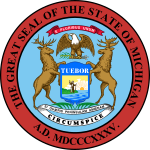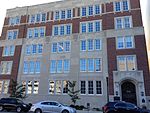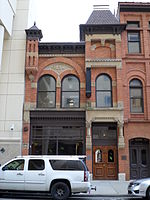St. Mary Cathedral (Lansing, Michigan)
20th-century Roman Catholic church buildings in the United StatesChurches in Lansing, MichiganChurches in the Roman Catholic Diocese of LansingChurches on the National Register of Historic Places in MichiganGothic Revival church buildings in Michigan ... and 8 more
Michigan Registered Historic Place stubsMichigan building and structure stubsMidwestern United States church stubsNational Register of Historic Places in Lansing, MichiganRoman Catholic cathedrals in MichiganRoman Catholic churches completed in 1937United States Roman Catholic cathedral stubsUse mdy dates from August 2023

St. Mary Cathedral is a cathedral of the Roman Catholic Church in Lansing, Michigan one block north of the Michigan State Capitol. It is the seat of the bishop of the Roman Catholic Diocese of Lansing.
Excerpt from the Wikipedia article St. Mary Cathedral (Lansing, Michigan) (License: CC BY-SA 3.0, Authors, Images).St. Mary Cathedral (Lansing, Michigan)
Seymour Avenue, Lansing
Geographical coordinates (GPS) Address Website External links Nearby Places Show on map
Geographical coordinates (GPS)
| Latitude | Longitude |
|---|---|
| N 42.735555555556 ° | E -84.556111111111 ° |
Address
St. Mary Cathedral
Seymour Avenue 219
48933 Lansing
Michigan, United States
Open on Google Maps









